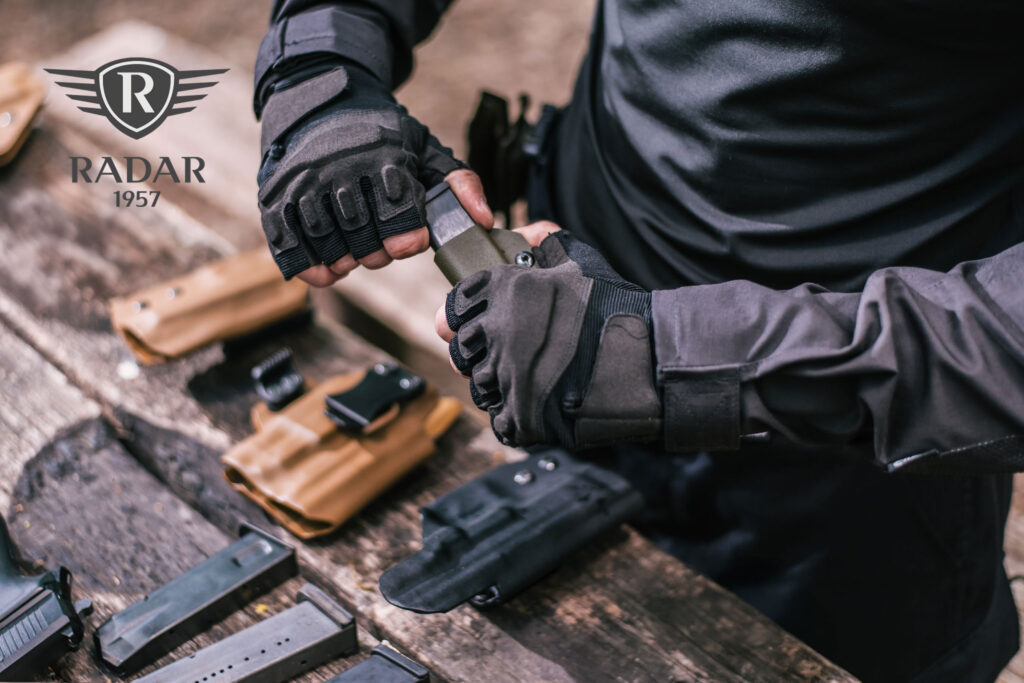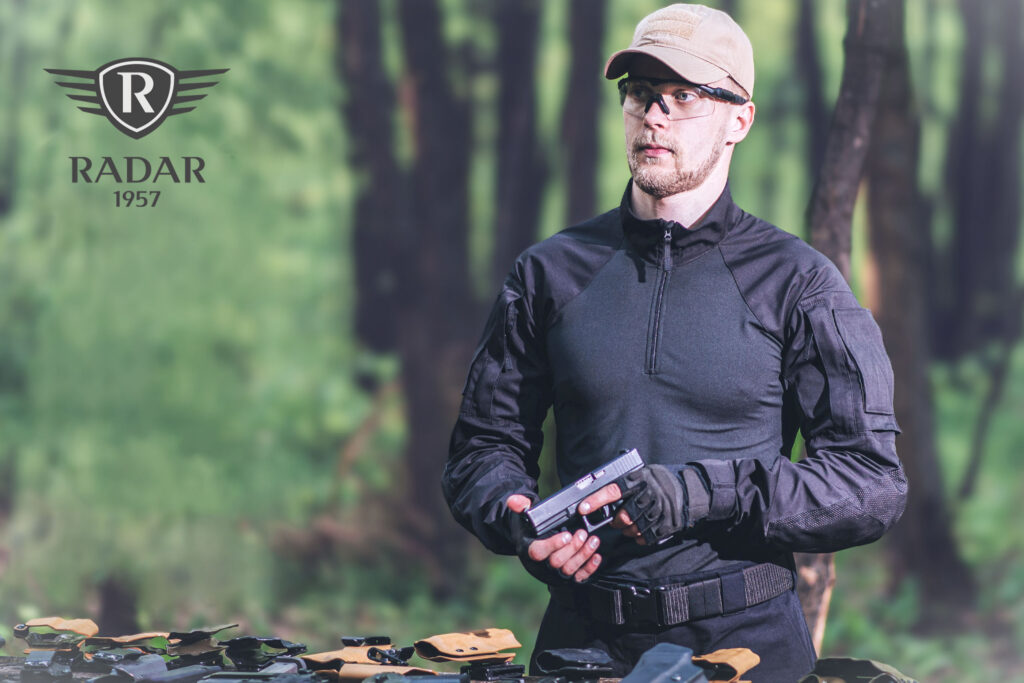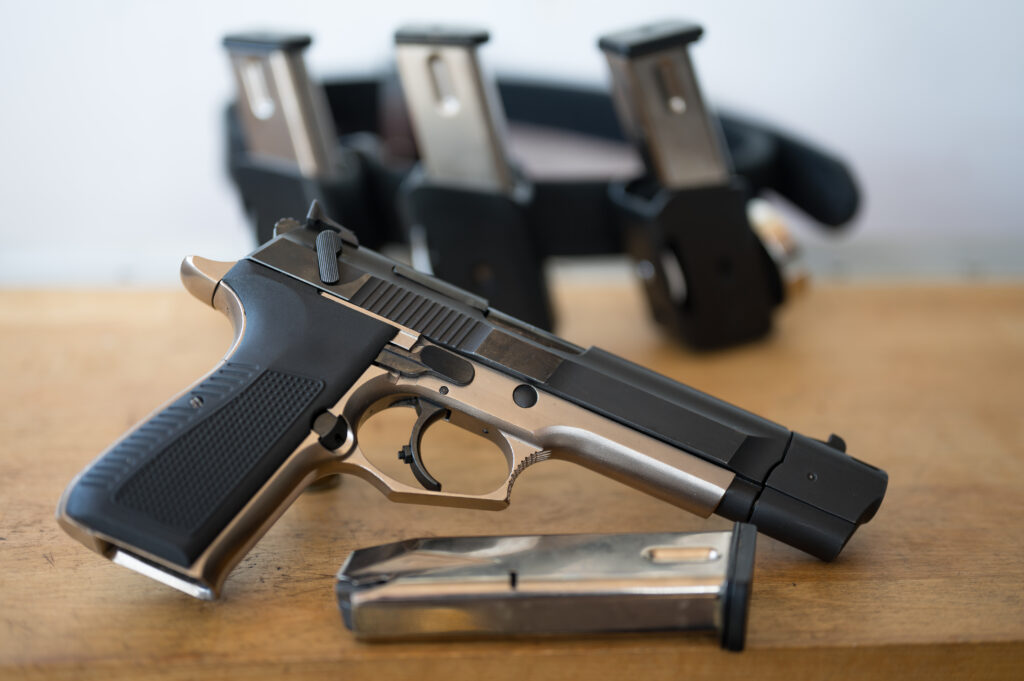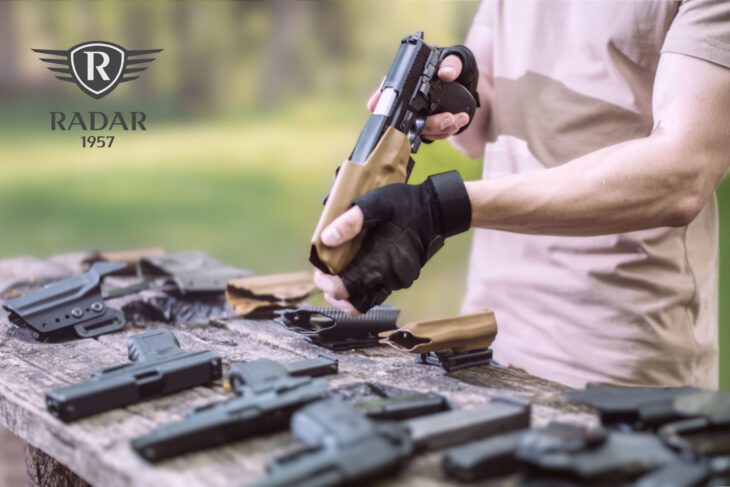Safety and efficiency in holster use are fundamental aspects for both industry professionals and sports enthusiasts. Knowing and avoiding common mistakes can make the difference in terms of safety and performance. Let’s analyze together the main errors and solutions to avoid them.
Mistakes in Holster Selection
One of the first and most critical errors occurs during the selection phase:
- Choosing a holster that’s too cheap or of low quality
- Not considering your specific type of use
- Ignoring the importance of weapon compatibility
- Underestimating ergonomics and comfort
- Preferring aesthetics over functionality
Positioning Errors
Proper positioning is crucial for safety and efficiency. Inadequate positioning not only compromises draw speed and carry comfort but can also create potentially dangerous situations. Position selection must take into account multiple factors such as the user’s body type, clothing worn, operational context, and specific usage requirements. A common mistake is following trends or others’ preferences without considering your individual characteristics. It’s essential to remember that optimal positioning varies from person to person and often requires a testing and adaptation phase.
Common Errors:
- Positioning too high or too low on the belt
- Inadequate angle for your drawing style
- Failing to consider body type
- Interference with other equipment
Solutions:
- Test different positions before finalizing your choice
- Consider natural wrist angle during drawing
- Verify accessibility in different situations
- Ensure proper distance from the body

Maintenance Issues
Inadequate maintenance can compromise safety and durability:
Mistakes to Avoid:
- Neglecting regular cleaning
- Ignoring signs of wear
- Not periodically checking retention systems
- Using inappropriate cleaning products
Best Practices:
- Schedule regular inspections
- Clean according to material specifications
- Regularly check screws and components
- Replace worn parts promptly

Training Errors
Improper training can create dangerous habits and seriously compromise both safety and operational effectiveness. Proper holster training is as fundamental as shooting training itself, as it represents the critical interface between carrying the weapon and its use. Many operators underestimate the importance of specific training in holster use, focusing exclusively on shooting techniques.
Training must be systematic and progressive, starting from safe handling basics up to advanced drawing and reholstering techniques under stress conditions. It’s essential to develop correct muscle memory through constant and supervised repetitions, avoiding acquiring incorrect automatisms that could prove dangerous in real situations.
An often overlooked aspect is integrating holster training in various environmental and operational conditions that might be encountered in reality. This includes use with different types of clothing, in variable weather conditions, and in scenarios that reproduce stress situations or movement limitations.
Common Problems:
- Lack of regular practice
- Ignoring safety fundamentals
- Not varying training conditions
- Underestimating the importance of reholstering speed
Solutions:
- Establish a regular training routine
- Practice in various environmental conditions
- Focus on safety before speed
- Include realistic scenarios in training
Retention System Errors
Improper management of retention systems is a critical error that can have serious consequences for operational safety. Retention systems represent a fundamental element in modern holster design, balancing the need for quick access to the weapon with keeping it securely in position. Too often, users tend to underestimate the importance of these mechanisms or modify them inappropriately to achieve perceived better performance. A properly adjusted retention system must ensure that the weapon remains firmly in position during any physical activity while allowing smooth and controlled drawing when necessary.
To Avoid:
- Retention too loose or too tight
- Unauthorized modifications to security systems
- Incorrect use of retention levels
- Neglecting mechanism maintenance
Recommendations:
- Adjust retention according to your needs
- Maintain original security systems
- Choose appropriate retention level
- Regularly verify functionality
Clothing Incompatibility
The interaction between holster and clothing represents one of the most complex and often underestimated challenges in weapon carrying. An inappropriate choice of clothing or poor consideration of its compatibility with the carrying system can compromise not only operational effectiveness but also discretion and overall safety. Carrying a holster requires careful planning of your wardrobe, which must adapt to both professional needs and operational requirements. Clothing is not simply an aesthetic element but becomes an integral part of the carrying system, directly influencing accessibility and draw speed. Seasonal variation in clothing represents an additional challenge that requires particular attention. The transition from light summer clothing to heavier winter wear may require significant modifications to the carrying system, including possible use of different holsters or equipment repositioning. This need for continuous adaptation requires careful planning and a variety of solutions suitable for different situations. In the professional context, clothing compatibility must be evaluated not only with respect to the holster but to the entire operational equipment system, always ensuring efficient and safe access to the weapon.
Common Errors:
- Not considering seasons and clothing changes
- Ignoring concealed carry coverage needs
- Poor integration with professional equipment
- Use of inadequate clothing
Solutions:
- Plan holster system based on wardrobe
- Test coverage in different positions
- Verify compatibility with equipment
- Adapt clothing to operational needs

Final Considerations
Avoiding these common mistakes requires awareness, training, and constant attention. Safety and efficiency in holster use are never casual, but the result of conscious choices and established good practices.
Key Tips:
- Invest in quality products
- Focus on continuous training
- Maintain regular maintenance
- Periodically verify equipment
- Always adapt the system to your specific needs

